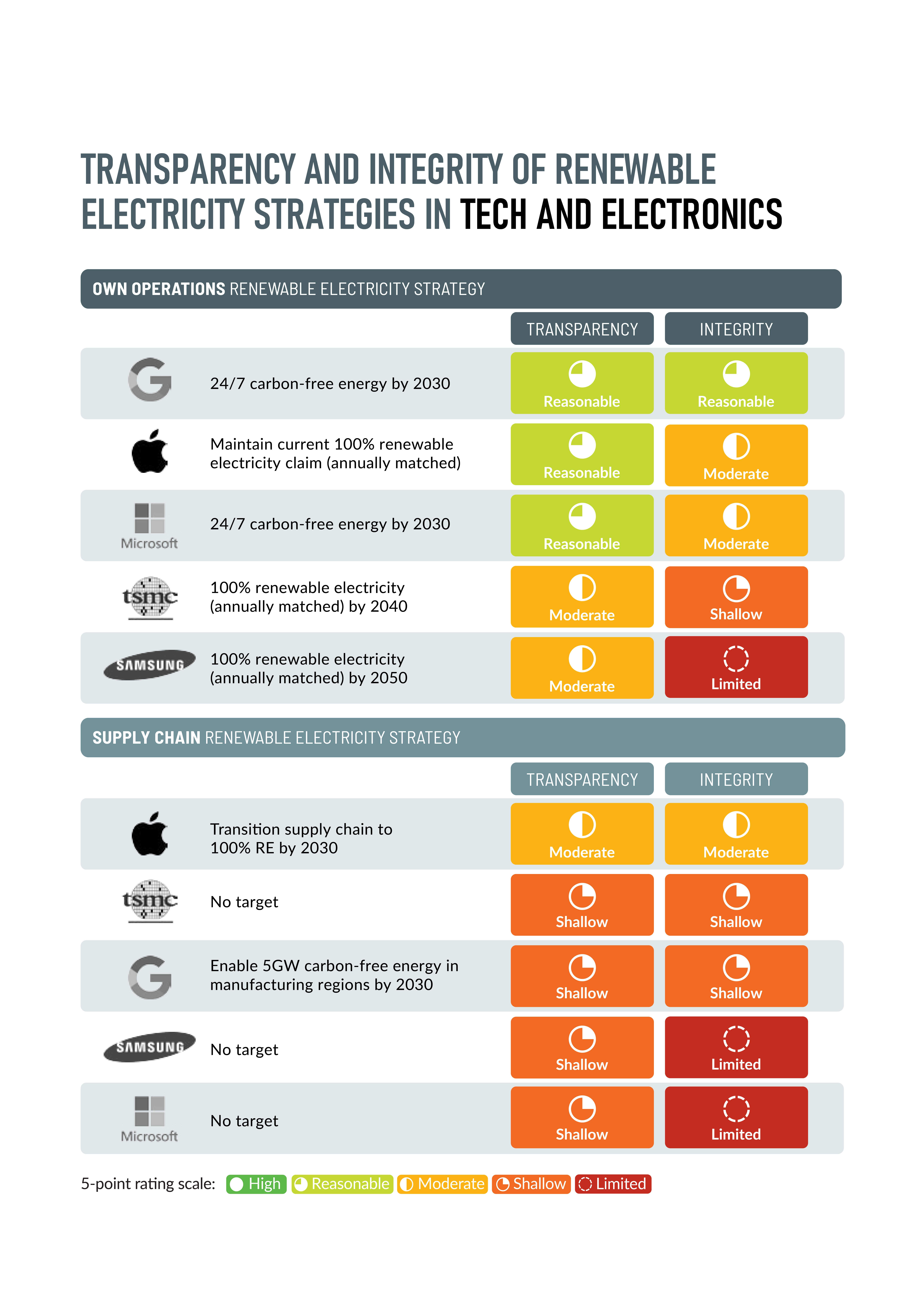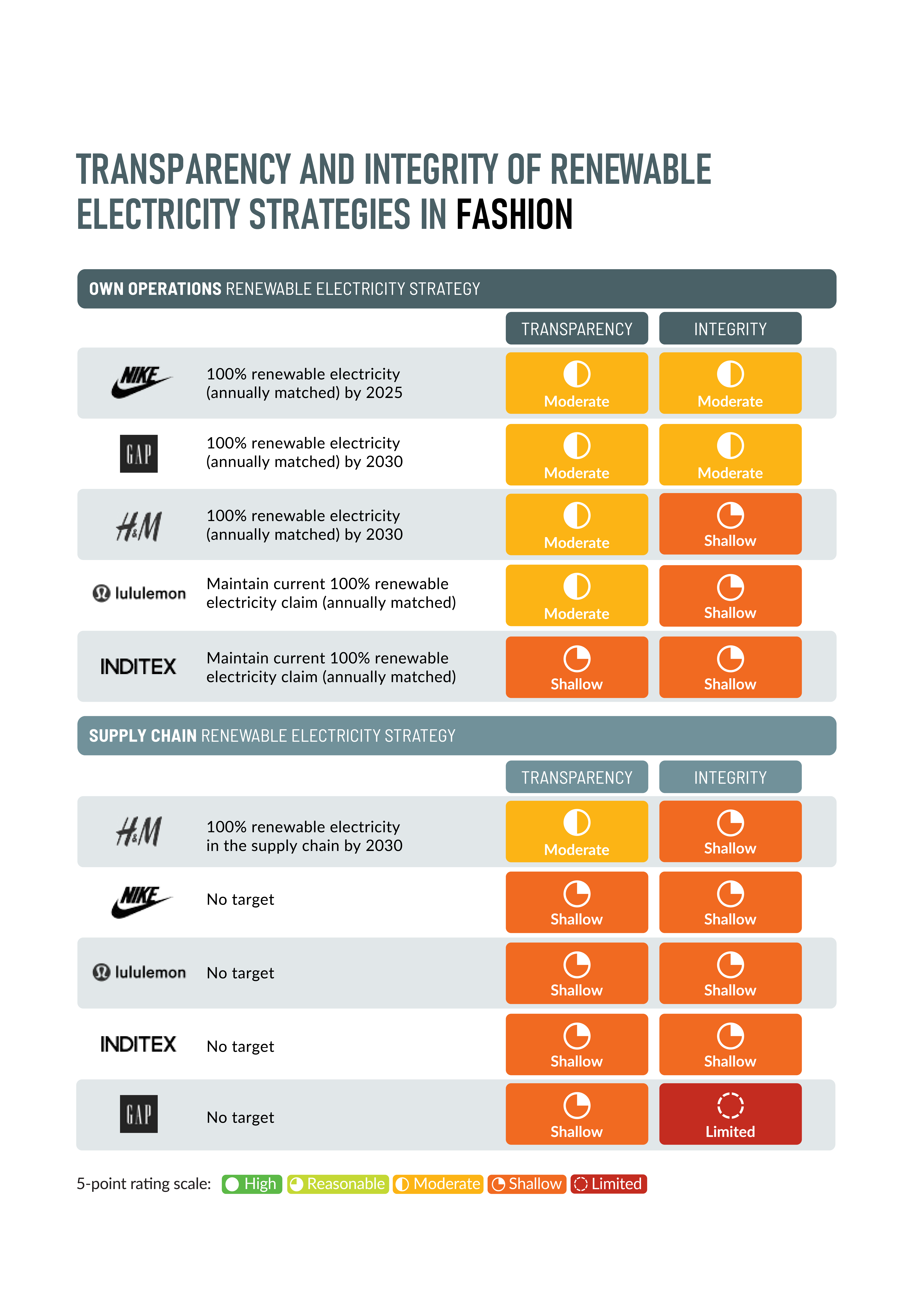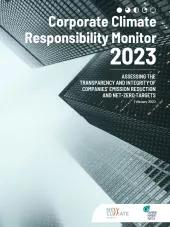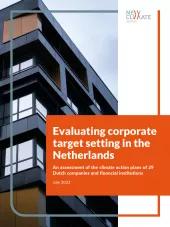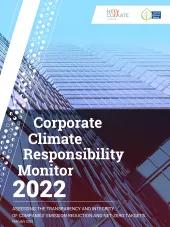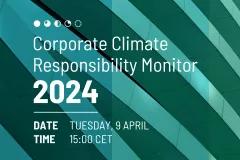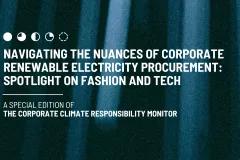A special edition of the Corporate Climate Responsibility Monitor assesses the integrity of renewable electricity targets from 10 major companies in fashion and tech.
The real GHG emission reduction impact of companies’ renewable electricity claims is often far less than implied. Several companies, including H&M Group, Inditex and Samsung Electronics, continue to rely heavily on standalone Renewable Energy Certificates (RECs), despite mounting evidence and awareness that this low-cost instrument is very unlikely to contribute to additional renewable capacity. In many cases, there is no or a very weak physical link between the grid where the RECs were generated, and the grid where the renewable electricity is claimed. For instance, companies may procure RECs generated in Norway to claim they are using renewable electricity in Bulgaria. This action sends no signal to Norwegian power suppliers, who already are producing most of their electricity from renewables, nor to Bulgarian power suppliers. Most of the 10 companies plan to transition away from RECs to higher quality procurement instruments, such as Power Purchase Agreements (PPAs), in the near future. While PPAs might contribute to additional renewable capacity being installed, further efforts are needed to decarbonise power systems and bring companies’ emissions from electricity consumption to zero.
There is growing momentum for matching renewable electricity generation with consumption on an hourly basis. Google and Microsoft are pioneering a 24/7 matching method, where they match their electricity consumption with the generation of renewable electricity on the same grid on an hourly basis. Emerging scientific literature on hourly matching shows that this method is far superior to annual matching, which hides a significant embedded reliance on fossil fuel generation. Companies that commit to hourly matching provide a critical demand pull for additional and new renewable energy generation and storage technologies that will be vital to completely decarbonising power systems.
Highly influential initiatives, such as the GHG protocol, RE100 and SBTi, currently provide limited incentives and potentially even barriers for companies to strive for higher quality renewable electricity strategies. Companies that invest significant resources in impactful renewable electricity strategies are currently held on the same platform as companies that employ the easiest available cover-ups, such as standalone RECs. Initiatives’ guidelines do not align well with emerging best practices, such as switching to an hourly matching method, while they continue to recognise some of the lowest quality renewable electricity procurement methods and claims without differentiation.
Increasing the share of renewable electricity in the supply chain remains a blind spot for most of the 10 companies assessed. Apple and H&M Group are the only two companies to committed to 100% renewable electricity in supply chain, although both targets contain significant caveats. Apple’s target applies only to Apple output and may therefore require little action from suppliers who could allocate existing renewable electricity shares to Apple output while effectively making other output more carbon intensive. H&M Group’s target does not include a commitment to electrify manufacturing processes. Across the 10 companies, we identified a range of replicable good practice measures for supporting renewable electricity in the supply chain, although none of the companies currently implement a comprehensive package of good practice measures.
